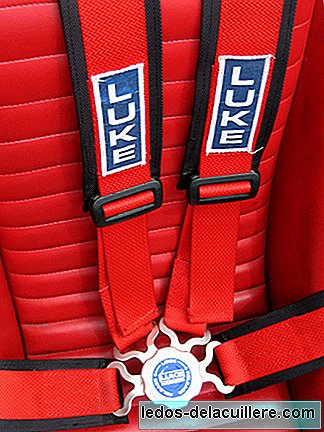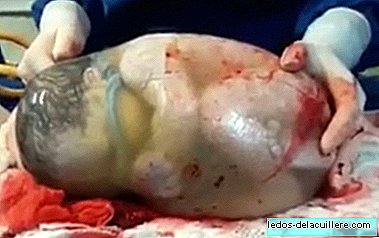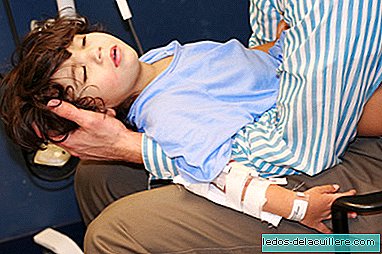
Seven days ago I started a small series dedicated to car safety when traveling with children who have special needs, I anticipated that it would give continuity, and the first thing I have to say is that I am sorry to have delayed in bringing you the second post.
On that occasion we gave an overview of special needs, and expanded the information with the advice of the American Academy of Pediatrics. Today we will talk about legislation in this aspect, as well as about the experiences of countries that provide clear Guides and Guidance to the parents of these children, in order to adapt the most appropriate safety systems in cars.
I remind you that these summaries are extracted from the Mapfre Foundation report called 'Children with special needs and their safety in the car'. There are many national and international laws and regulations that stipulate that Children with disabilities have the same right as any other person to live as independently as possible, as well as to active participation in society. One of the basic principles of the Convention on the Rights of the Child (of the United Nations) is precisely that "the child, due to his lack of physical and mental maturity, needs special protection and care, both before and after birth."
In relation to mentally or physically disabled children, article 23 of the convention indicates that 'they must enjoy a full and decent life in conditions that ensure their dignity, allow them to become self-sufficient and facilitate the active participation of the child in community'
Regarding the rights of persons with disabilities, and on the fundamental issue of accessibility, the corresponding United Nations convention obliges states to identify and eliminate obstacles and barriers to access so that people with disabilities have access to their physical environment, to means of transportation, to public facilities and services and information and communications technologies.
Seats for children with special needs must also be homologated
Car seats that will be used by children with special needs must be approved according to the same technical regulations applicable to conventional child seats: the European regulation ECE R44 / 04.
Experiences in other countries:
Canada
In this country, the Ministry of Transportation has published a guide called 'Transporting babies and children with special needs in private vehicles - A guide to best practices for health professionals'. The text can be considered one of the most complete documents currently related to this subject.
The purpose of the guide is to provide health care professionals with useful information about the transportation in the private car of children and babies with special needs
It distinguishes between conventional seats, special child seats available through the catalog, and custom seats. It is also taken into account that the conditions of the families may change over time.
In Canada, it is possible obtain a certificate of exemption from the use of restraint systems when exceptional medical conditions are suffered. However, it is worth noting that, according to the Canadian guide, the Medical Association of Canada has clearly stated that 'there is no medical condition that justifies exemption from the use of a seat belt'
When a conventional seat cannot be used, medical personnel should do everything possible for parents to use special or custom seats, especially in those cases in which it is anticipated that such seats should be used for long periods of time (more than six months). Providing information about the different seating options, and where to get them, is essential to prevent parents from using homemade and unsafe solutions. The guide mentioned also includes in the last part, a section to the attachment in the vehicle of that medical equipment that must be continuously used by children with special needs.
U.S
Maybe is the country that has paid the most attention to travel with children with special needs or, at least, the country with more accessible information on this subject. The American Academy of Pediatrics advocates that it is the pediatricians who act as prescribers of the importance of safety systems for children with special needs. In this nation there are different Guides and prescriptions prepared by associations of motorists, hospitals and other entities.
Among the specific recommendations of the AAP, are:
For babies,
Many children in need of special health care can use conventional child seats and, in these cases, the best alternative is to use a normal child seat. The use of “special” child restraint systems can be postponed, on many occasions, until the child exceeds the maximum weight or size limit allowed by the conventional child seat.
Child restraint systems should never be modified or used differently than indicated by their manufacturer., except if, after modification, the seat has been re-tested and complies with the regulations for the approval of child seats.
When the back of the child seat is too vertical, and this causes the child to drop his head forward when sitting on a back-facing chair, it is recommended to fit a towel or a piece of rolled fabric under the seat base to ensure that the inclination of the back of the child seat does not exceed 45º and matches that specified by the manufacturer of the child seat.
Before leaving the hospital, premature or underweight children should be seated in their child seats and observed and monitored by medical personnel. If the child experiences any of the following symptoms, then he should be transported in a cuckoo or carrycot where he can lie: low blood oxygen, slow heart rate or apnea.
For big kids,
When a child reaches the maximum weight or height limit of his infant seat, but still needs additional postural support (for example, in the case of children with cerebral palsy, poor control of the neck or head, or with certain neuromuscular disorders), there are several alternatives to continue traveling protected.
Some children with disabilities can get a better posture and greater support at the trunk level if they travel in conventional booster seats. The booster seats help to correctly place the vehicle's seat belt on the pelvis and chest of the children.
Conventional three-point belts may also be sufficient to properly support the chest of some children with special needs.. The belts, in any case, must be used correctly: the lower band must be low and flat on the hips, and the upper band must be adjusted without gaps on your chest.
Specific recommendations are followed by others that respond to all kinds of special conditions that children with special needs may present
Sweden
Sweden is another country with more information on this subject in international literature. In 2003 a manual was published in Swedish (and later translated into English), it is called 'Safe travel: road safety for children with disabilities'.
The Swedish manual It is aimed primarily at parents of children with special needs, but it is also routinely used by officials and those responsible for transport and social assistance policies, school and special transport drivers, workers of technical assistance centers and pediatric clinics, insurance companies, as well as tutors or teachers of children with special needs.
The only general advice that can be offered is that it is always necessary to consult with the doctor or pediatrician what are the specific mobility solutions for each child with special needs
And once reviewed parts of the international experiences, I place you to the next installment, in which you describe some of the solutions for special situations.












